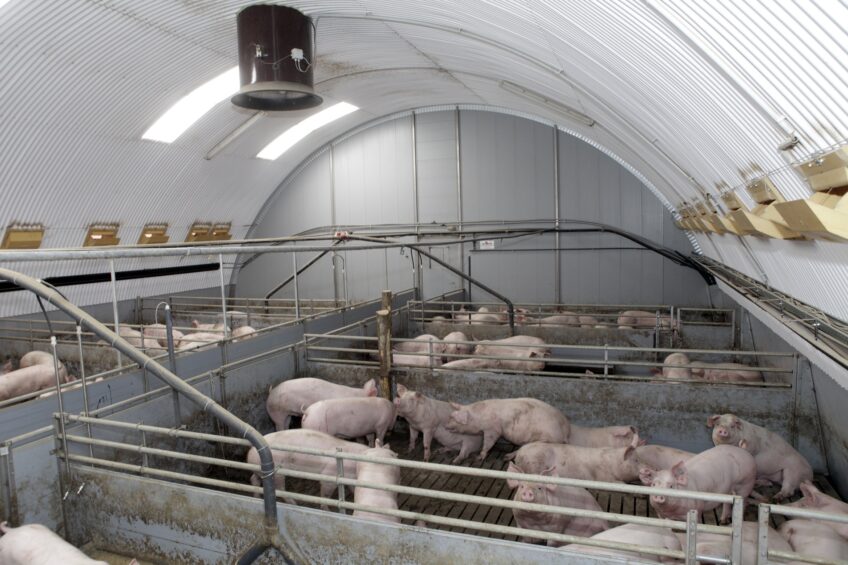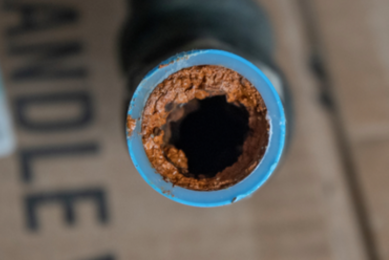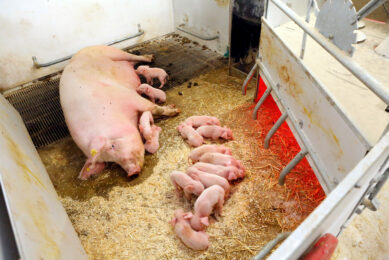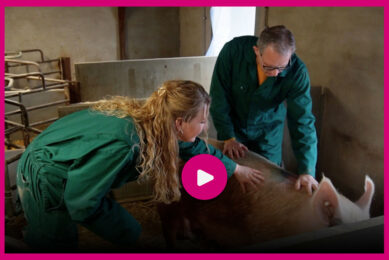Shining a light on pigs’ colour vision and lux

The way in which pigs are provided with light receives little attention, according to pig welfare expert Dr Irene Camerlink. There is a lot to gain by looking more into what type of light and lighting schedule is used on the pig farm.
Some of you may remember the time when pigs were kept in complete darkness. It was practiced to reduce aggression and unrest and thereby to increase growth performance. When the pigs would finally see the light when going for slaughter, they would come out terrified and, if loaded during daytime, be completely blinded by the sunlight. Luckily this is now prohibited. At least in the EU, pigs are required to have a minimum 40 lux lighting for 8 hours a day.
Flickering lights
There has been surprisingly little attention for the way in which pigs are provided with light. In other species, research on lighting has resulted in major changes in management, to the benefit of the animals. For example, poultry are known to be sensitive for photometric flicker, like flickering TL (luminescent tube) lights, and can perceive flicker when humans cannot. Flicker can be a major source of stress and can affect productivity. Pigs see flicker similar to humans, which still means that keeping pigs under flickering lights can still be a source of stress.
Red heat lamp for piglets
Many mammals have dichromatic vision, which makes that they cannot see red light. Trichromatic vision allows humans to see red, which is used in our advantage during hunting, but also to improve animal welfare during handling procedures. For example, handling rats and mice under red light as compared to white light is much less stressful for these nocturnal animals. Studies in pigs also show that using a red heat lamp for piglets is less disruptive than a transparent heat lamp, and resulted in the strongest circadian rhythm for melatonin.
Maintaining a natural day and night rhythm is important for balanced functioning, and improves resilience to stressors and immune threats
Regular light schedules
Circadian rhythms have an important role in bodily functions, including metabolism and hormone secretion. Maintaining a natural day and night rhythm is important for balanced functioning, and improves resilience to stressors and immune threats. Light schedules therefore need to be regular, whereas gradual light changes can be used to mimic seasons. In the insemination or mating unit, the light schedule can be extended to 14 hours per day, with stronger light (at least 100 lux), in order to stimulate hormone secretion related to heat.
Pigs prefer blue and green
From the few studies on pigs’ preferences for light colour, the outcomes are not very clear yet, but it seems that pigs prefer blue (439 nm) and green (556 nm). These are indeed the wavelengths for which pigs’ spectral sensitivity peaks, meaning they can see best. This can be used strategically for directing pigs’ behaviour, such as during weaning when pigs have to find feed and water. Instead of using bright light, which can be aversive, it may be better to use blue or green coloured light for increasing visibility.
Clean and evenly distributed across the barn
There seems a lot to gain still by looking more into what type of light and lighting schedule is used in each farm section. At the basis, pigs should have at least enough light to maintain a healthy day and night rhythm. For this, lighting needs to be clean and evenly distributed across the barn so that all pigs have at least the minimum lux at eye level.











